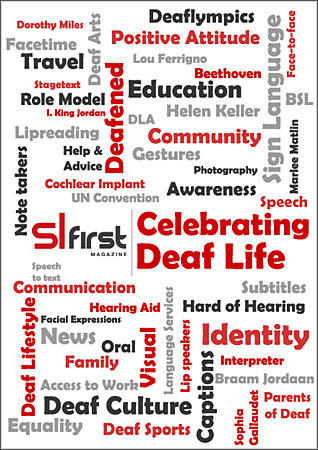Help & Advice12th October 2013
New National Standards of Communication for People with Sensory Loss
The Welsh Assembly Government have introduced new national standards for communication for people with sensory loss using NHS services
 Amongst Deaf and Hard of Hearing people, one aspect of public service tends to cause more angst than any other, and that is our Health Service. Whilst there are always very welcome pockets of excellent practice, I also hear about less than adequate services at least every week.
Amongst Deaf and Hard of Hearing people, one aspect of public service tends to cause more angst than any other, and that is our Health Service. Whilst there are always very welcome pockets of excellent practice, I also hear about less than adequate services at least every week.
Deaf and Hard of Hearing people tend to be frequent users of the various Health Services, and yet despite the provision of feedback many times, things have been slow to improve. Whether it is the provision of an interpreter, good lines of communication, advice or information, the primary and secondary health care services too often fail to meet the needs of deaf people.
In Wales, we hope that things are about to change. Following a lengthy consultation process, and the development of guidance, Health Boards across Wales have been given a wonderful opportunity to lead the way in the provision of thoughtful and appropriate services towards people with sensory loss.
Health Boards have been provided with a document setting out the 'All Wales Standards for Accessible Communication and Information for People with Sensory Loss'. The purpose of these standards is to:
"ensure that the communication and information needs of people with a sensory loss are met when accessing our healthcare services. It sets out the standards of service delivery that people with sensory loss should expect to receive when they access healthcare. These standards apply to adults, young people and children."
Without going into detail at this stage, this simply means that people with sensory loss should be given information in a format that suits them. When using healthcare services, communication needs should be established, and those requirements should be met. If health care services live up to these standards, the improvements could represent a step change in delivery of service standards.
By way of specific information, amongst the various standards, it is recommended that:
* All frequently used information leaflets and documents intended for patients and the public should be available in accessible formats for people with sensory loss;
* Public and patient areas should be assessed to identify the needs of people with sensory loss;
* People with sensory loss should be asked to describe their communication needs when they register with a new GP or primary healthcare service;
* Arrangements should also be made to gather this information for existing patients;
* It is important that staff are patient and sensitive in their approach in asking a patient to describe their communication and information needs;
* A ‘flagging’ system on a patient’s computer or paper record should enable practice staff to understand the needs of the patient when they attend the practice;
* Good signage is important in ensuring that people with sensory loss are able to access the healthcare they need;
* It is important to recognise that environmental factors influence effective communication with people who have sensory loss. It is important to check that the healthcare environment is accessible and that it encourages effective communication. This should include lighting, colour contrasting and background noise;
* When patients are referred from primary care for treatment in secondary care, their communication needs should be transferred using the referral process. Patients should not have to keep repeating that they have a sensory loss and the communication support they require;
* People with sensory loss should be able to make an appointment through a variety of contact methods as a telephone based appointment system may be inaccessible to them. This would include email, text messaging, textphones and websites;
* All appropriate staff should be trained in any communication systems provided by the health board. This should include developing their awareness of the need for different forms of communication;
* All staff should be trained in how to communicate effectively with someone with a sensory loss. This training should reflect a person centred approach which encourages staff to use clear speech and respond appropriately to individual needs. This is particularly important for clinical staff as patients need to understand what is being communicated to them when they attend for a consultation;
* Every patient or service user who requires communication support should have this need met, by for example, arranging a British Sign Language Interpreter or Lipspeaker or providing a hearing loop induction system. It is important to have an awareness of other communication methods that may not be as well known, for example, speech to text or live captioning;
* Appropriate communication support should also be provided to people with sensory loss who may be attending an appointment in the capacity of a carer or as the parent of a child;
* Healthcare professionals have a responsibility to make certain that patients with sensory loss leave the healthcare setting having heard and understood everything they need to know about their healthcare.
* Appropriate procedures should be in place to ensure that information is conveyed clearly to patients during a consultation.
These standards represent a huge improvement, and the more patients know about them, the more likely it is that service providers will deliver the standards that many patients have long been looking for.
Article by Sarah Lawrence
posted in Community / Help & Advice
12th October 2013





